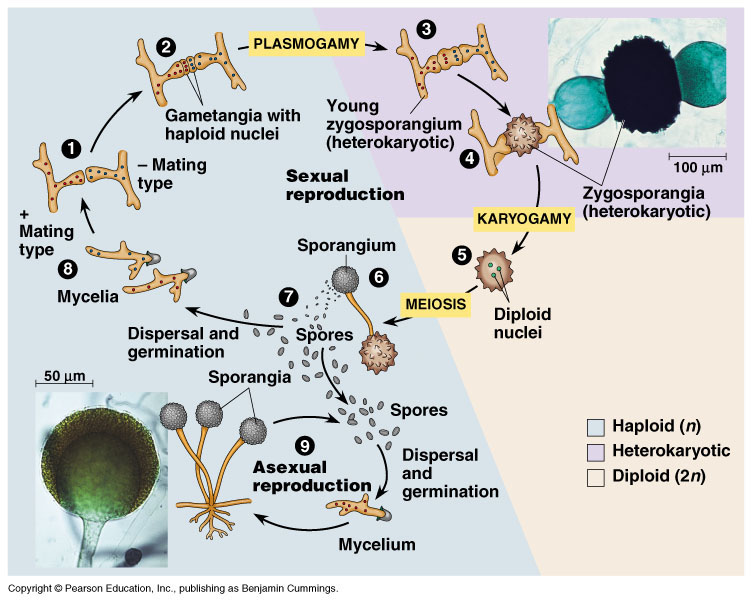fungi life cycle explained
Spores are tiny cells that form on special hyphae and are so small that more than 1000 would easily fit on a pinhead. Fungus reproduction is not very romantic.

Reproduction In Fungi Life Cycle Of Fungi Youtube
Fungi are eukaryotic non-vascular non-motile and heterotrophic organisms.
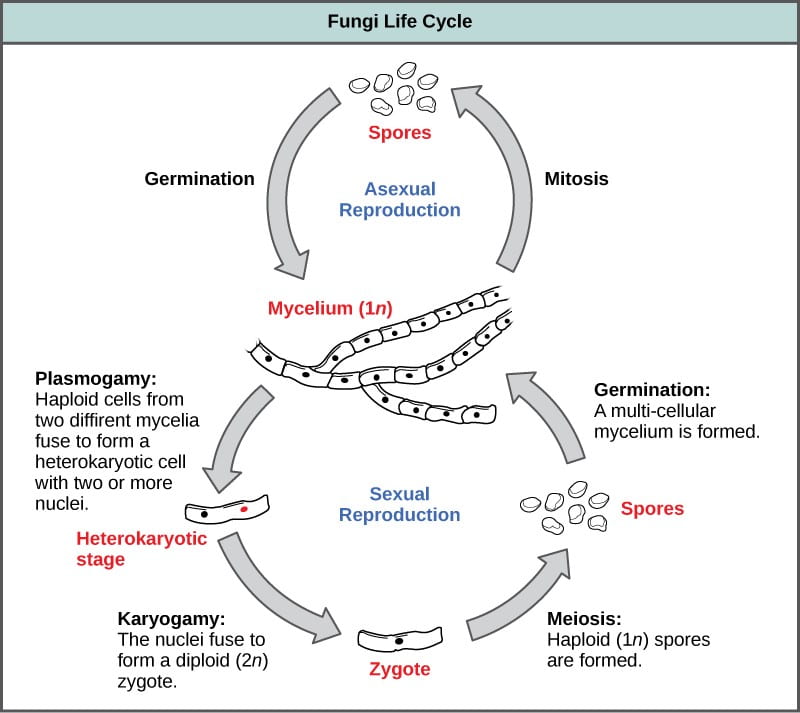
. Most of the molds indoors are considered to go through a four-stage life cycle. This is when mycelium comes together to form a knot near the surface of the soil which will soon develop into a primordia aka baby mushroom cute. Fungi reproduce sexually either through cross- or self-fertilization.
Life Cycle of Fungi. The single nucleus of the resting spore divides early in germination. The mode of asexrual reproduction.
But this model provides a good overview in terms of how fungi grows from birth to death. The life cycle of fungi has many different patterns based on the species of the fungi. The generalized life cycle of fungi.
While some fungi reproduce sexually others reproduce asexually. Fungus Life Cycle. Perfect fungi are sexually and asexually replicated whereas imperfect fungi are only asexually reproduced by mitosis.
In this electron micrograph of a mushroom gill the four spores produced by meiosis seen in the center of this picture are carried on a clublike sporangium visible to the left and right. From these spores haploid hyphae grow and ramify and may give rise to asexual sporangia. With the elongation of the germ tube most of the mitochondria migrate into it and become concentrated near the tip.
Sexual reproduction is carried out by diffusion of compatable nuclei from two parent at a definite state in the life cycle of fungi. An Overview The fungi kingdom is an essential part of the Earths ecosystem and integral for its health and survival. Terms in this set 21 Fungi unique for.
As part of their life cycle fungi produce spores. To form n gametes n. Fungi must leave their food to find more and they do this not as hyphae but as spores.
The electron-dense wall layer W 2 remains at the base of the germ tube and around the spore. In both sexual and asexual reproduction fungi develop spores that either fly on the wind or take a ride on an animal dispersing. The mycelium is the root structure of a fungal speciesone stage of a fungi life span that branches throughout the Earths crust creating an underground interconnected network that connects.
The mycelium contains haploid nuclei from both specimens. To form n gametes n. The life cycle of fungi has many different patterns based on the species of the fungi.
Not all fungi reproduce in the same way. Brundrett 1990 showed the same cycle pattern using an alternative diagram of the developmental stages of a mould. Fungi exist primarily as filamentous dikaryotic organisms.
Sexual reproduction in fungi. In this article we will discuss about the life cycle of ascomycetes explained with the help of a suitable diagram. You can think of the spore phase as both the beginning and end of a mushrooms life.
Mushrooms create what is called a mycelium network. With the elongation of the germ tube most of the mitochondria migrate into it and become concentrated near the tip. Here the haploid spores produced from zygote germinate to produce haploid mycelia.
Spores produced both. There are four basic steps in the life cycle of a fungi. Haploid hyphae produce gametes which fuse by plasmogamy and karyogamy to produce diploid zygote.
This is where spores come in which are dispersed by wind and can produce a new mycelium. Mushroom spores are tiny microscopic reproductive units that are produced by fungi as well as some types of plants and algae. But this model provides a good overview in terms of how fungi grows from birth to death.
It involves the fusion of the hyphae of two different individuals into a mycelium. Fungi store their food in the form of starch. This primordia is visible to the naked eye which means all the hard work is about to pay off.
One of these migrates into the germ tube. Spore germ hypha mature mycelium. For most of the molds indoors fungi are considered to go through a four-stage life cycle.
The life cycle of fungi can follow many different patterns. This is the first stage in the life cycle of a fungus. The process of sexual reproduction involves three phases.
Spore germ hypha mature mycelium. The first sign of an emerging mushroom is a hyphal knot. Being so small and lightweight spores can easily move unseen in the air currents and most fungal spores are spread by the wind.
In this article we will discuss about the life cycle of ascomycetes explained with the help of a suitable diagram. Despite their diversity in many features the Ascomycetes possess certain common unifying characteristics namely the somatic body composed of a loose indefinite mass of septate mycelium. The fungi which reproduce sexually have alternating haploid and diploid phases.
Fungi replicate sexually andor asexually. By producing vast numbers of spores both sexually and asexually so in TWO parts of life cycle Major difference from plants.

Diagrammatic Representation Of Mushroom Life Cycle Download Scientific Diagram

Basidiomycota Life Cycle Study Com

Basidiomycota Part 2 The Mushroom Life Cycle Youtube

Characteristics Of Fungi Openstax Biology 2e

Zygomycota The Conjugated Fungi Biology For Majors Ii

Mushroom Life Cycle Kidspressmagazine Com
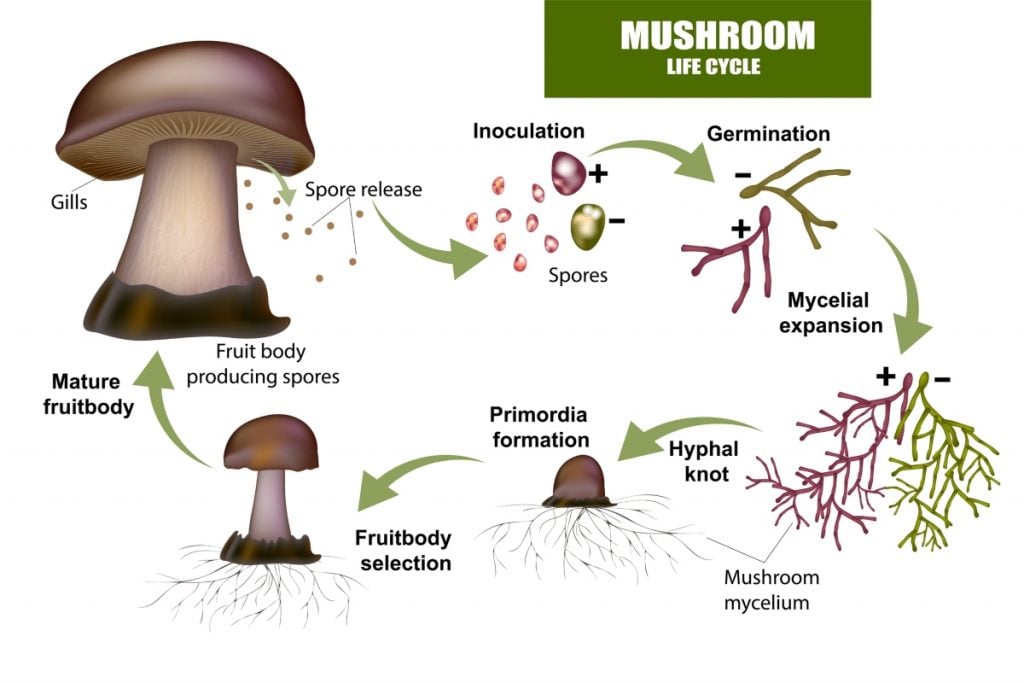
A Detailed Explanation Of The Mushroom Life Cycle Grocycle

Life Cycle Of A Mushroom Worldkids

Plasmogamy An Overview Sciencedirect Topics
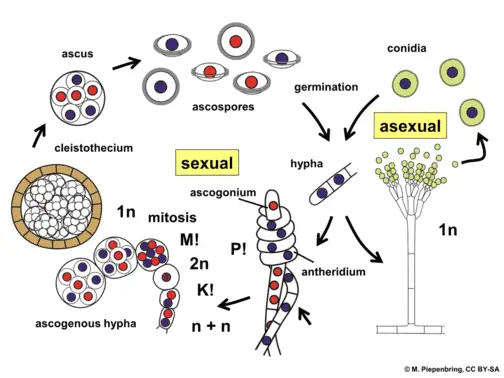
Fungi Explained Here Is What You Need To Know Microscope Clarity

24 1c Fungi Reproduction Biology Libretexts
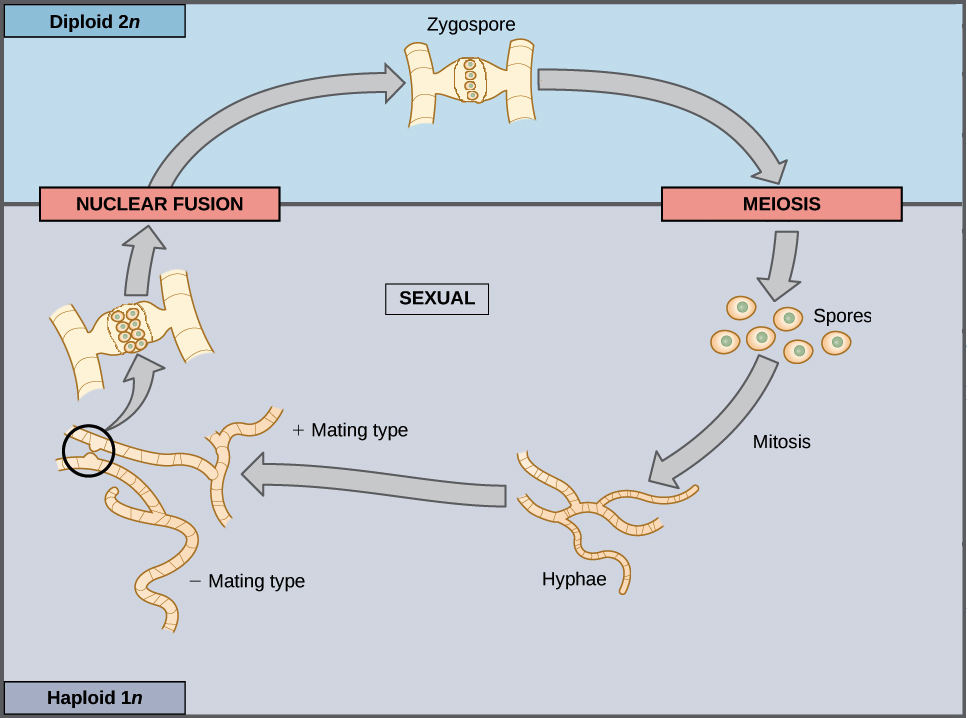
Sexual Life Cycles Article Meiosis Khan Academy
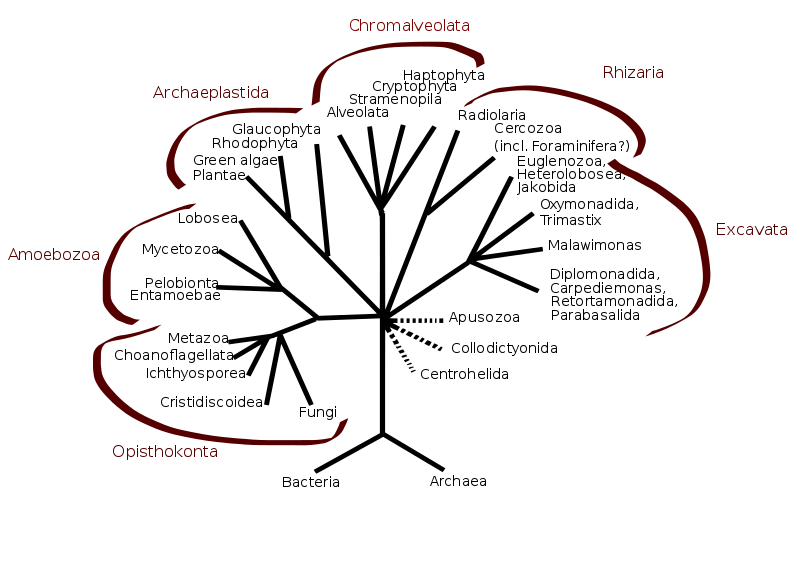
Intro To The Fungi Life Cycle Plantsnap

